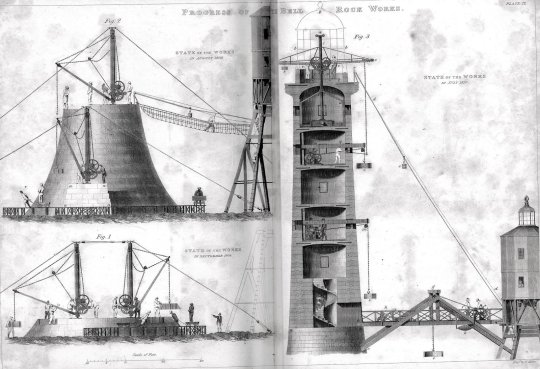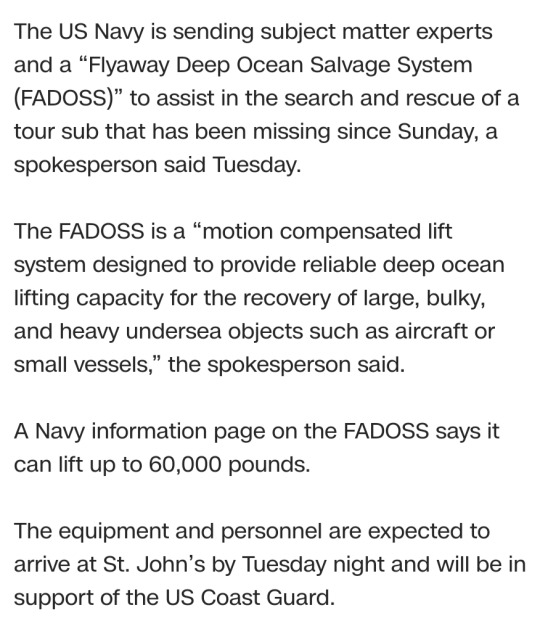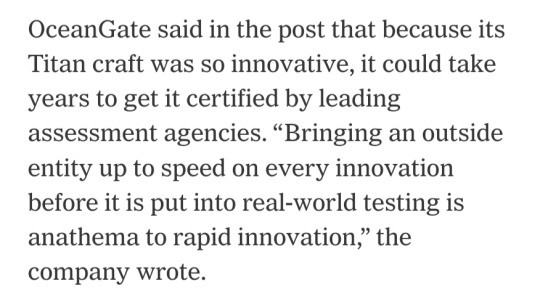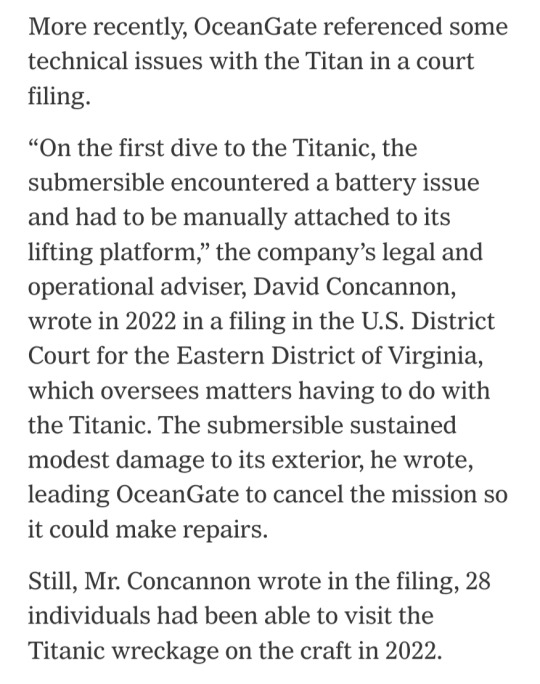#Offshore support vessel
Text
Chicago, Jan. 31, 2024 (GLOBE NEWSWIRE) -- The global Offshore Support Vessel Market size is projected to grow from USD 22.6 billion in 2023 to USD 31.4 billion by 2028, at a CAGR of 6.7% according to a new report by MarketsandMarkets™.
#offshore support vessel#offshore support vessel (OSV)#offshore support vessel market#offshore vessel#offshore supply#offshore energy#offshore oilfield#offshore oilrig#offshore oil and gas#offshore oil#offshore drilling#offshore oilwell#offshore platform#offshore decommissioning#offshore pipeline#offshore wind#offshore rig#offshore company formation#offshore outsourcing#offshore#energy#energia#oilfield#oil and gas industry#oilfields#oil and gas#oil#oil well
0 notes
Text
The global Offshore Support Vessel Market is projected to reach USD 31.4 billion by 2028 from USD 22.6 billion in 2023 at a CAGR of 6.7% according to a new report by MarketsandMarkets™.
#offshore companies#offshore outsourcing#offshore services#offshore drilling#offshore#offshore oil rig#offshore support vessel market#offshore support vessel#offshore systems#offshore supply#offshore supply vessel#offshore vessels#offshore vessel#energy#oil and gas#oil and gas industry#offshore oil and gas#offshore oil#offshore pipelines#offshore platform#offshore energy#offshore wind farm#offshore wind#offshore wind power#oil and gas exploration#oil and gas companies
0 notes
Text
Global offshore support vessel market is expected to reach the market valuation of approximately US$ 28 billion by 2030 expanding at a reasonable CAGR of above 5% during the forecast period.
0 notes
Text
India offshore support vessel market is projected to grow at a double-digit CAGR during the forecast period, FY2024-FY2031.
0 notes
Text
Waves of Opportunity: Offshore Support Vessel Market Trends
Offshore support vessel market transport goods, supplies, and major equipment during exploration and production of offshore mineral resources. These vessels are operated by ship owners and are utilized to locate oil & gas bearing areas, towing rigs, and platforms, and positioning them. These vessels are also deployed in subsea operations such as inspection, diving support, and maintenance. Moreover, other facilities provided include transportation, standby capacity, anchor management, and platform support. It also enables in moving the crew members to offshore sites.
This report projects the trends and opportunities of the global offshore support vessel market. This research study includes a qualitative and quantitative analysis with comprehensive research methodologies and reliable projections to understand the present overview and predict the market behavior during the forecast period.
Rise in offshore exploration and production activities drive the offshore support vessel market. Moreover, increase in capital expenditure on offshore oil exploration further leads to offshore developments. The market is projected to grow at a higher rate during the analysis period owing to the rise in demand for oil & gas. However, high replacement and maintenance cost of these vessels hamper the market growth. In addition, lack of technical professionals in the offshore industry also restricts the growth.
The global offshore support vessel market is segmented based on type, depth, and geography. On the basis of type, it is divided into anchor handling tug supply, platform supply vessel, multipurpose support vessel, standby & rescue vessel, crew vessel, chase vessel, and seismic vessel. On the basis of depth, the market can be bifurcated into shallow water and deep water. Geographically, it is analyzed across North America, Europe, Asia-Pacific, and LAMEA.
Key market players in this sector include Rem Maritime As, Bass Marine Pty Ltd., Harvey Gulf, Island Offshore Management, Havila Shipping ASA, and Intermarine LLC, Grupo Coremar S.A., Delta Logistics Limited, Deep Sea Supply PLC, Bumi Armada Berhad, Topaz Energy, and Marine Limited.
Key Benefits for Stakeholders
This report provides a quantitative analysis of the current trends, estimations, and dynamics which assists to identify the prevailing market opportunities.
Major countries in each region are studied as per the key trends developments, and presence of industry players in the market.
Region-wise and country-wise market conditions are comprehensively analyzed in the report.
Key players of the market are also listed.
This study evaluates the value chain to understand the competitive environment across geographies.
An in-depth analysis of segmentation is provided to elucidate the prevailing market opportunities.
Key Market Players : Delta Logistics Limited, Island Offshore Management, Harvey Gulf, Havila Shipping ASA, Deep Sea Supply PLC, Rem Maritime As, Bumi Armada Berhad, Grupo Coremar S.A., Bass Marine Pty Ltd., Intermarine LLC
0 notes
Link
#market research future#offshore support vessels#supply vessel spot market#offshore supply vessel market#offshore vessel charter rates
0 notes
Text
Global Offshore support vessel services Market by Vessel Type - Platform Supply Vessel (PSV) | Multirole field & ROV Support Vessel (MRSV) | Offshore Subsea Construction Vessel (OSCV) | Anchor Handling Tug Supply (AHTS) | Emergency Response and Rescue Vessels (ERRSV) | Chase & Seismic Vessels | Standby Crew Vessels
0 notes
Link
North America Offshore Support Vessels Market is poised to grow at CAGR of 2 % by 2027. Factors driving North America Offshore Support Vessels Market are less period of investment return from offshore and upcoming offshore wind farm projects in countries such as the United States and Canada.
#north america offshore support vessels market#north america offshore support vessels market outlook#north america offshore support vessels market size#north america offshore support vessels market share#north america offshore support vessels market forecast#north america offshore support vessels market report
0 notes
Link
The United States offshore support vessels market is expected to exhibit moderate growth during 2021-2026.
#United States Offshore Support Vessels Market Share#United States Offshore Support Vessels Market Trends#United States Offshore Support Vessels Market Growth
0 notes
Text
Offshore Support Vessel Market to record robust growth rate in coming 10 years | Bourbon, Grupo CBO, Gulfmark
Global Offshore Support Vessel Market report from Global Insight Services is the single authoritative source of intelligence on Offshore Support Vessel Market. The report will provide you with analysis of impact of latest market disruptions such as Russia-Ukraine war and Covid-19 on the market. Report provides qualitative analysis of the market using various frameworks such as Porters’ and PESTLE analysis. Report includes in-depth segmentation and market size data by categories, product types, applications, and geographies. Report also includes comprehensive analysis of key issues, trends and drivers, restraints and challenges, competitive landscape, as well as recent events such as M&A activities in the market.
An offshore support vessel (OSV) is a type of ship that is used to provide logistic and supply support to offshore oil and gas platforms. These vessels are typically equipped with cranes, winches, and other heavy-duty machinery that is used to transport supplies and personnel to and from the offshore platform. OSVs can also be used for other purposes such as environmental monitoring, search and rescue, and disaster relief.
Request Sample Report – https://www.globalinsightservices.com/request-sample/GIS20565/
Key Trends
Offshore support vessel (OSV) technology is constantly evolving in order to meet the demands of the oil and gas industry. The most significant trend in OSV technology is the move towards larger and more sophisticated vessels. This is being driven by the need for increased capacity and performance in order to support the ever-growing offshore oil and gas industry. Larger vessels are able to carry more cargo and fuel and have the ability to stay at sea for longer periods of time. They are also equipped with more advanced technologies, such as dynamic positioning systems, which allow them to maintain a constant position in rough seas.
Key Drivers
The key drivers of the offshore support vessel market are the increasing exploration and production activities in the offshore oil and gas industry, the need for cost-effective and efficient transportation of goods and personnel to offshore oil and gas fields, and the increasing demand for environmental friendly and fuel efficient vessels. The offshore oil and gas industry is undergoing a period of rapid expansion, driven by the increasing demand for energy and the need to find new sources of oil and gas. This has led to an increase in exploration and production activities in the offshore oil and gas industry, which in turn is driving the demand for offshore support vessels.
Market Segmentation
By Type
Anchor Handling Towing Supply Vessel
Platform Supply Vessel
Fast Supply Intervention Vessel
By Water Depth:
Shallow Water
Deepwater
Breakup by Fuel:
Fuel Oil
LNG
By Service Type:
Technical Services
Inspection & Survey
By Application:
Oil and Gas
Request For Customization – https://www.globalinsightservices.com/request-customization/GIS20565/
Key Players
Bourbon
Grupo CBO
Gulfmark
Havila
Maersk
Seacor Marine
SIEM Offshore
Solstad
With Global Insight Services, you receive:
10-year forecast to help you make strategic decisions
In-depth segmentation which can be customized as per your requirements
Free consultation with lead analyst of the report
Excel data pack included with all report purchases
Robust and transparent research methodology
Ground breaking research and market player-centric solutions for the upcoming decade according to the present market scenario
About Global Insight Services:
Global Insight Services (GIS) is a leading multi-industry market research firm headquartered in Delaware, US. We are committed to providing our clients with highest quality data, analysis, and tools to meet all their market research needs. With GIS, you can be assured of the quality of the deliverables, robust & transparent research methodology, and superior service.
Contact Us:
Global Insight Services LLC
16192, Coastal Highway, Lewes DE 19958
E-mail: [email protected]
Phone: +1–833–761–1700
0 notes
Text



The Bell Rock Lighthouse, off the coast of Angus, was first lit on the 1st of February 1811.
Over 200 years after it was first built, the Bell Rock Lighthouse still stands - proudly flashing its warning light. Eleven miles out to sea off the east coast of Scotland, it is a remarkable sight - a white stone tower over 30m (100ft) high, rising seemingly without support out of the North Sea.
In fact, it is precariously poised on a treacherous sandstone reef, which, except at low tides, lies submerged just beneath the waves.
The treacherous reef on which it stands is in the North Sea, between the Firths of Forth and Tay, some 12 miles south of Arbroath and 14 miles south east of St Andrews. The red sandstone outcrop is 435m long and the lighthouse is founded on the main section, 130m long and 70m wide, and only 1.2m above the surface at low water spring tide.
The reef was known originally as Inchcape Rock or Cape Rock. According to tradition, in the 14th century the Abbot of Aberbrothok (Arbroath) placed a floating bell on it to warn mariners, hence its present name. Legend has it that sometime later a Dutch pirate removed the bell but he was later shipwrecked and perished on the same reef. The rocks were dangerous to ships sailing along the east coast of Scotland and by the end of the 18th century the need for a lighthouse was clear.
A severe storm in December 1799, in which about 70 vessels were wrecked, prompted Stevenson to propose a beacon-style lighthouse on six cast iron pillars.
Stevenson submitted a scale model of his idea to the Northern Lighthouse Board in summer 1800 — accurate physical modelling was to become something he often employed subsequently on important projects.
Stevenson drew the inspiration for his lighthouse design from the Eddystone Lighthouse, off the coast of Cornwall.
Built 50 years earlier by John Smeaton, this was a milestone in lighthouse design. Shaped with the now classic wide base, tapering to a narrow tower (Smeaton had modelled it on an oak tree he had witnessed defying a storm), it was the only off-shore structure that had until then managed to survive for any length of time against the constant battering of the seas.
Stevenson elaborated on this design. His lighthouse would have to be higher, over 30m (100ft), if it was to survive the cruel waves of the North Sea. He also incorporated more efficient reflectors, using the latest oil lighting technology, which would make his beacon the brightest yet seen.
But the Northern Lighthouse Board rejected the plan outright; in their eyes Stevenson was attempting the impossible, and besides, it was going to cost the huge sum of £42,685 and 8 shillings.
The rock had to claim another victim before the Board revisited Stevenson's plans. In 1804 the huge 64-gun HMS York was ripped apart on the rock, with the loss of all 491 crew. The NLB could delay no longer. Britain's most eminent engineer, John Rennie, was invited to give his advice.
Rennie had never actually built a lighthouse, but the Board was so impressed by his record that he was given the job of chief engineer. Robert Stevenson was to work as his resident engineer.
History does not record Stevenson's reaction to the news, but it must have come as a bitter blow to this ambitious young man. What history does record is that the structure on Bell Rock came to be known not as Rennie's but as Stevenson's Lighthouse.
Work started in 1807 and what followed was a four-year epic, with work severely restricted by tides that on occasion submerged the rock’s surface to twelve feet. The offshore activity only proceed during the summer months, and even then only with difficulty. Poor weather in the summer of 1808 allowed only 80 hours of work were completed.
To avoid time lost in shuttling workers to and fro Stevenson built a temporary wooden “Beacon House” on the rock and this served as both a base of operations and living quarters for fifteen men. As this structure (see illustrations) was also exposed to storms during the construction period, residence on it must have in itself have been a nightmare. During the winter months Stevenson kept his crews busy ashore, dressing the individual granite blocks needed for the tower. The total number required was some 2500 and all were drawn to the dockside by one of the unsung heroes of the project, a horse called Bassey.
The lighthouse came into service in 1810 and was to fulfil its purpose very effectively. Between then and 1914 only a single ship was lost on the rock, a steamer called the Rosecraig that ran aground during a fog in 1908, fortunately without loss of life.
The light has now operated for 212 years and has undergone many significant and ingenious upgrades and changes, some of them even being undertaken by non-Stevenson engineers. It was a manned light for 177 years, the lives of those keepers on their temporary Alcatraz being a source of equal fascination
The lighthouse was manned until 1988, when the station turned automatic and the last men were withdrawn.
50 notes
·
View notes
Text
The global Offshore Support Vessel Market is projected to reach USD 31.4 billion by 2028 from USD 22.6 billion in 2023 at a CAGR of 6.7% according to a new report by MarketsandMarkets™. An offshore support vessel (OSV) is specially designed to support offshore exploration, drilling, production, and construction activities in the oil & gas industry.
#offshore oil and gas#offshore decommissioning#offshore drilling#offshore company formation#offshore outsourcing#energy#energia#Offshore support vessel#Offshore support vessel market#osv#osv market#Offshore vessel#Offshore rig#offshore#offshore oilfield#offshore oilrig#offshore energy#offshore oil#offshore wind
0 notes
Text
Jun 05, 2023 (AB Digital via COMTEX) --
The global Offshore Support Vessel Market is projected to reach USD 31.4 billion by 2028 from USD 22.6 billion in 2023 at a CAGR of 6.7% according...
#offshore supply vessel#offshore supply#offshore support vessel#offshore support vessel market#offshore companies#offshore outsourcing#offshore services#offshore drilling#offshore#offshore oil rig#offshore oil and gas#offshore oil#offshore pipelines#offshore platform#offshore drilling rigs#offshore decommissioning#offshore rig#offshore energy#offshore vessels#offshore vessel#marine#maritime#offshore exploration
1 note
·
View note
Text
L ♡ V E R ⇌ L ⦻ S E R — people i tolerate

Group chat — people i tolerate
prev • masterlist • next






Kunikuzushi
Stage name: Wanderer
Occupation: main rapper of 6reeze.
Living situation: residing in his condo in the capital Inazuma, but he often retreats to his secluded cottage in Tatarasuna village, located on Kannazuka island.
Eldest child of Ei Raiden who is the CEO of BB (Baal & Beelzebub) Entertainment
Developed a deep hatred for his younger sister, who is set to inherit the company
Ei's constant criticism led to him becoming emotionally distant
Moved to Snezhnaya to become a solo artist under Fatui Corp., eventually returning to Inazuma and joining 6reeze
Venti
Stage name: Barbatos
Occupation: lead singer and leader of 6reeze, former soloist from Mondstadt.
Living situation: owns his own apartment in the International District of Ritou; occasionally travels back to Mondstadt to visit friends and family.
Born into a musical dynasty family, with a revered mother in Mondstadt's indie folk music scene
He chose to follow his own path as a solo artist, and without his mother’s aid he was able to grow his talent, playing concerts at pubs and small venues
Caught the attention of a BB Entertainment while performing as a supporting act at a festival
Despite his carefree and cheerful persona, he battles personal childhood demons and seeks solace wine
Xiao
Stage name: Alatus
Occupation: lead guitarist and sub-rapper of 6reeze; formerly a member of The Yakshas, a relatively underground Liyuean rock band.
Living situation: renting a small loft apartment in Ritou’s harbor district.
Grew up with an abusive single mother, enduring constant emotional and verbal torment
During his freshman year of high school, he stumbled upon Bosacius practicing drums, igniting a newfound passion for music in him
Formed a band with Bosacius and later joined by Indarias, Bonanus, and Menogias
Joined 6reeze after his previous band, The Yakshas, disbanded
Kaedehara Kazuha
Occupation: sub-vocalist of 6reeze, song writer and poet; passionate hobbyist photographer.
Living situation: resides in a small house near the outskirts of Hanamizaka alongside Heizou; he once used to live in the luxurious Tenshukaku district of Inazuma City.
Born into the noble Kaedehara clan, one of Inazuma's founding families
Witnessed the decline of his family's wealth, and found solace in composing songs for his close friend, Tomo, an aspiring musician
After the tragic loss of his friend, he embarked on The Crux, an offshore vessel, and explored Teyvat
Two years after sailing with the ship's crew, he joined 6reeze, determined to honor Tomo's memory
Shikanoin Heizou
Occupation: drummer and sub-rapper of 6reeze; hobbyist true crime podcaster
Living situation: currently living together with Kazuha in a small, cozy house in Hanamizaka, but he wants to move to Inazuma City’s Tenryu district
Grew up in a small village, forced to work alongside his father and learn martial arts
Went through a rebellious phase, joining an underground fight club
Became a drummer for a small band during his first year at university, and chose to embrace the art, giving up on his academic pursuit
Hosts a true crime podcast in his spare time, staying connected to his initial interest of Criminology
Aether
Occupation: bass guitarist and sub-vocalist of 6reeze
Living situation: he resides in a tiny apartment nestled in the International district of Ritou, located a few blocks away from Venti’s place
Grew up in Starfell Valley along with his twin sister, Lumine
As teens, they established a YouTube channel with a large following, creating covers of various songs
Performed as a musical duo at small venues and pubs until Lumine decided to step away to pursue a travel with her boyfriend
Scouted around the same time as Venti, so the two of them bonded quickly over their shared roots in Mondstadt

Author's note: sike, i lied, no waiting til the weekend, it's 4am but here's the rest of the profiles. Definitely will have to check for any spelling mistakes when i wake up lol
A little secret — i actually haven't watched Moriarty the Patriot yet 😪 it's there, on my to-watch list along with dozens of animes and movies and series and yea
Taglist — @scaramoo
#smau#scaramouche x reader#scaramouche x you#scaramouche x y/n#scaramouche smau#genshin impact smau#genshin smau#genshin x you#genshin x reader#genshin x y/n#scaramouche#wanderer#wanderer x you#wanderer x y/n#wanderer x reader#lover = loser smau
57 notes
·
View notes
Text
When turbine blades for the United States’ first offshore wind project left port in September 2023, headed for the Vineyard Wind 1 project off Massachusetts, they were traveling on a barge instead of a wind turbine installation vessel, or WTIV. These purpose-built vessels are common in other parts of the world and make the job much, much easier. A WTIV is a transportation and construction rig in one. Frequently equipped with a big crane, deployable legs, and a dynamic positioning system, WTIVs can support the installation of several humongous turbines per trip.
There are dozens of WTIVs plying the world’s waters. So, why were the Vineyard Wind 1 blades delivered on a barge? This expensive, inefficient workaround was necessary because of a century-old law known as the Jones Act.
Also known as the Merchant Marine Act of 1920, the Jones Act requires anyone transporting goods from one point in the United States to another to use an American ship. And by a modern interpretation of the old law, an offshore turbine counts as a point in the United States. The trouble is, the United States doesn’t have any WTIVs. And without the appropriate equipment, the country’s offshore wind efforts are being plagued by the need for repeated, smaller-capacity barge trips that have added costs to projects already beset by financial difficulties. Danish energy company Ørsted, for example, cited vessel delays when it canceled two planned projects off the New Jersey coast: Ocean Wind 1 and 2.
The country’s first Jones Act–compliant WTIV, the Charybdis, is currently under construction in Texas. While originally planned for completion in 2023, labor constraints have pushed the Charybdis’s launch back at least a year, possibly into 2025, says Dominion Energy, the vessel’s owner.
The Biden administration’s goal is to deploy offshore wind turbines capable of generating 30 gigawatts of power by 2030. That’s more than 2,000 turbines. To meet this target, the National Renewable Energy Laboratory (NREL), part of the US Department of Energy, says there’s a need for four to six WTIVs. But as 2030 draws ever closer, the incomplete Charybdis remains the only one.
The Jones Act is tricky to navigate. For a vessel to be compliant, it must not only be built in the United States and running the country’s flag but also be owned and crewed by Americans. Consequently, US shipyards enjoy a monopoly, which allows them to demand massively inflated prices.
When finished, the 144-meter-long Charybdis will boast over 5,000 square meters of main deck area and accommodate up to 119 people, supported by on-board cabins, mess rooms, and shops, as well as a cinema, gym, and hospital. But the WTIV’s cost has climbed from US $500 million to $625 million. Meanwhile, the major shipyards in South Korea could have built a similar vessel in less time, for less money, and with a more powerful crane.
The reason for the Jones Act’s longevity, says Colin Grabow, a research fellow at the Cato Institute, a libertarian think tank, is that while it tends to benefit only a few people and businesses, the act goes unnoticed because there are many payers sharing the increased costs.
The Jones Act is one in a string of protectionist laws—dating back to the Tariff Act of 1789—designed to bolster US marine industries. The Jones Act’s existence was meant to ensure a ready supply of ships and mariners in case of war. Its authors reasoned that protection from foreign competition would foster that.
“Your average American has no idea that the Jones Act even exists,” Grabow says. “It’s not life-changing for very many people,” he adds. But “all Americans are hurt by the Jones Act.” In this case, that’s by slowing down the United States’ ability to hit its own wind power targets.
Grabow says those most vocal about the law—the people who build, operate, or serve on compliant ships—usually want to keep it in place.
Of course, there’s more going on with the country’s slow rollout of offshore wind power than just a century-old shipping law. It took a slew of factors to sink New Jersey’s planned Ocean Wind installations, says Abraham Silverman, an expert on renewable energy at Columbia University in New York.
Ultimately, says Silverman, rising interest rates, inflation, and other macroeconomic factors caught New Jersey’s projects at their most vulnerable stage, inflating the construction costs after Ørsted had already locked in its financing.
Despite the setbacks, the potential for offshore wind power generation in the United States is massive. The NREL estimates that fixed-bottom offshore wind farms in the country could theoretically generate some 1,500 gigawatts of power—more than the United States is capable of generating today.
There’s a lot the United States can do to make its expansion into offshore wind more efficient. And that’s where the focus needs to be right now, says Matthew Shields, an engineer at NREL specializing in the economics and technology of wind energy.
“Whether we build 15 or 20 or 25 gigawatts of offshore wind by 2030, that probably doesn’t move the needle that much from a climate perspective,” says Shields. But if building those first few turbines sets the country up to then build 100 or 200 gigawatts of offshore wind capacity by 2050, he says, then that makes a difference. “If we have ironed out all these issues and we feel good about our sustainable development moving forward, to me, I think that’s a real win.”
But today, some of the offshore wind industry’s issues stem, inescapably, from the Jones Act. Those inefficiencies mean lost dollars and, perhaps more importantly in the rush toward carbon neutrality, lost time.
6 notes
·
View notes
Text
the most recent development in the case of the missing Titan submersible is that the U.S. Navy has now officially been brought in to assist on the search. earlier it was reported that they were looked at being brought in but are now involved. while the U.S. Coast Guard was focusing mainly on the surface of the water in the search for the sub, the search is now taking place underwater as well. from CNN:

The US Navy is sending subject matter experts and a “Flyaway Deep Ocean Salvage System (FADOSS)” to assist in the search and rescue of a tour sub that has been missing since Sunday, a spokesperson said Tuesday.
The FADOSS is a “motion compensated lift system designed to provide reliable deep ocean lifting capacity for the recovery of large, bulky, and heavy undersea objects such as aircraft or small vessels,” the spokesperson said.
A Navy information page on the FADOSS says it can lift up to 60,000 pounds.
The equipment and personnel are expected to arrive at St. John’s by Tuesday night and will be in support of the US Coast Guard.
the other piece of news: there is only about 40 hours of breathable air left. also per CNN:

The Coast Guard said Tuesday that the search has not yielded anything so far, but it is continuing to look both on the surface and underwater for the missing submersible. Officials estimated that the crew onboard has "about 40 hours of breathable air left."
for those curious as to how something like this could even be ok'ed, know that others had doubts about what OceanGate was doing, too.
as reported by The New York Times, in 2018 Stockton Rush, CEO of OceanGate, by the Marine Technology Society's Manned Underwater Vehicles committee. the group itself is a 60-year old trade group that, according to their website, "promotes awareness, understanding, and the advancement and application of marine technology."
the letter itself was signed by more than three dozen people, which comprised of "oceanographers, submersible company executives and deep-sea explorers", had stated their "unanimous concern" in regards to the Titan submersible. today, Tuesday, chairman of the committee Wil Kohnen said the letter was written because of fears that presumably he and the others had about what could happen if a company is not held to industry standards. quote from Kohnen in the Times:

“The submersible industry had significant concerns over the strategy of building a deep sea expedition submersible without following existing classification safety guidelines,” Mr. Kohnen said.
according to the letter, they said that OceanGate's marketing of the Titan sub as claiming it would "meet or exceed the safety standards" of the DNV - by their website they are "the world’s leading classification society and a recognized advisor for the maritime industry"; they are to maritime vessels, vehicles, and offshore units what the DMV is to cars, trucks, etc., more or less - as "misleading." indeed, OceanGate had no plans to have the Titan assessed by the DNV.
Stockton Rush called Kohnen after receiving and reading the letter, and stated that "industry regulations were stifling innovation." they would later reiterate this stance in a 2019 blog post about why the Titan wasn't classed (which can be found here, for now).

OceanGate said in the post that because its Titan craft was so innovative, it could take years to get it certified by leading assessment agencies. “Bringing an outside entity up to speed on every innovation before it is put into real-world testing is anathema to rapid innovation,” the company wrote.
the company was aware, however, that the Titan had issues. once again, per the NYT:

More recently, OceanGate referenced some technical issues with the Titan in a court filing.
“On the first dive to the Titanic, the submersible encountered a battery issue and had to be manually attached to its lifting platform,” the company’s legal and operational adviser, David Concannon, wrote in 2022 in a filing in the U.S. District Court for the Eastern District of Virginia, which oversees matters having to do with the Titanic. The submersible sustained modest damage to its exterior, he wrote, leading OceanGate to cancel the mission so it could make repairs.
Still, Mr. Concannon wrote in the filing, 28 individuals had been able to visit the Titanic wreckage on the craft in 2022.
despite these issues with the Titan being brought up and essentially brushed away by OceanGate, issues having been brought up for years now, in retrospect it seems something like this happening was simply inevitable.
#long post#titan sub update#that's gonna be my tag for this I'm gonna keep making update posts every couple hours
21 notes
·
View notes